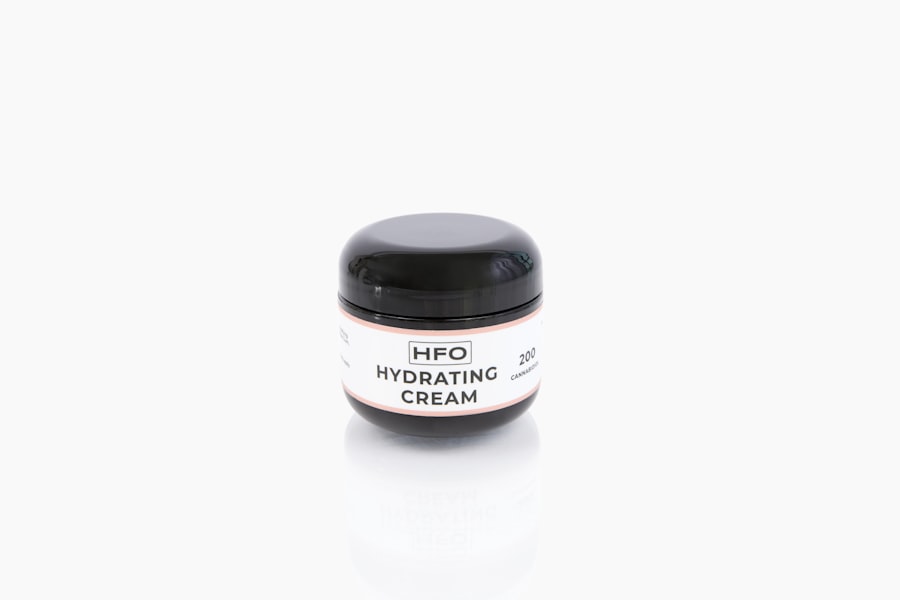After undergoing laser hair removal, the significance of proper aftercare cannot be overstated. This phase is crucial for ensuring that you achieve the best possible results from your treatment. The skin can be sensitive and reactive following the procedure, and how you care for it can greatly influence the effectiveness of the treatment.
By adhering to a well-structured aftercare routine, you not only enhance the results but also minimize the risk of complications such as irritation or infection. Moreover, understanding the importance of aftercare helps you to maintain the health of your skin. Laser hair removal works by targeting hair follicles with concentrated light, which can leave your skin temporarily vulnerable.
By taking the necessary steps to protect and nurture your skin post-treatment, you can promote healing and ensure that your skin remains smooth and free from unwanted hair. This commitment to aftercare is an investment in your long-term satisfaction with the results of your laser hair removal journey.
Key Takeaways
- Proper aftercare is crucial for successful laser hair removal treatment
- Follow a post-treatment skincare regimen to promote healing and prevent complications
- Use pain management techniques such as cooling gels or numbing creams as recommended by your provider
- Avoid sun exposure to prevent skin damage and pigmentation issues
- Keep the treated area hydrated and moisturized to aid in the healing process
- Schedule follow-up appointments for maintenance and to address any concerns
- Be aware of potential side effects and consult with a professional on how to manage them
- Always consult with a professional before and after laser hair removal treatment for personalized guidance
Post-Treatment Skincare Regimen
Establishing a post-treatment skincare regimen is essential for anyone who has recently undergone laser hair removal. Your skin may feel sensitive, and it’s important to choose products that are gentle and soothing. Start by cleansing the treated area with a mild, fragrance-free cleanser to avoid further irritation.
Avoid using any harsh scrubs or exfoliants for at least a week after your treatment, as these can exacerbate sensitivity and lead to discomfort. In addition to cleansing, incorporating a soothing moisturizer into your routine can help alleviate dryness and promote healing. Look for products that contain calming ingredients such as aloe vera or chamomile, which can provide relief to irritated skin.
It’s also wise to avoid any products containing retinoids or alpha hydroxy acids for a few days post-treatment, as these can increase sensitivity and potentially lead to adverse reactions. By being mindful of your skincare choices, you can support your skin’s recovery and enhance the overall results of your laser hair removal.
Pain Management and Relief

Experiencing some discomfort after laser hair removal is common, but there are effective strategies for managing pain and ensuring your comfort during the recovery process. Over-the-counter pain relievers such as ibuprofen or acetaminophen can be helpful in alleviating any mild pain or discomfort you may experience. Always follow the recommended dosage instructions and consult with your healthcare provider if you have any concerns about taking medication.
In addition to oral pain relief, applying a cold compress to the treated area can provide immediate relief from any swelling or irritation. Simply wrap ice in a clean cloth or use a gel pack designed for this purpose, and apply it gently to the skin for short intervals. This method not only helps reduce discomfort but also minimizes inflammation, allowing your skin to heal more effectively.
By combining these pain management techniques, you can navigate the post-treatment period with greater ease.
Avoiding Sun Exposure
| Metrics | Value |
|---|---|
| Sunscreen Usage | 80% |
| Time Spent in Shade | 60% |
| Use of Protective Clothing | 70% |
| Sunburn Incidents | 10% |
One of the most critical aspects of aftercare following laser hair removal is avoiding sun exposure. Your skin will be particularly sensitive after treatment, making it more susceptible to sunburn and pigmentation changes. It’s advisable to stay out of direct sunlight for at least two weeks post-treatment, as UV rays can interfere with the healing process and diminish the effectiveness of the procedure.
If you must be outdoors, wearing protective clothing such as long sleeves and wide-brimmed hats can shield your skin from harmful rays. Additionally, applying a broad-spectrum sunscreen with an SPF of 30 or higher is essential for protecting treated areas from sun damage. Reapply sunscreen every two hours if you are outside for extended periods.
By taking these precautions, you can safeguard your skin and ensure that your laser hair removal results remain optimal.
Hydration and Moisturizing
Staying hydrated is vital for maintaining healthy skin, especially after undergoing laser hair removal. Drinking plenty of water helps to keep your skin hydrated from within, promoting healing and reducing dryness that may occur post-treatment. Aim for at least eight glasses of water a day, and consider incorporating hydrating foods such as fruits and vegetables into your diet to further support your skin’s recovery.
In addition to internal hydration, external moisturizing is equally important. After laser hair removal, applying a gentle moisturizer can help soothe any irritation and keep your skin supple.
Regularly moisturizing not only aids in recovery but also enhances the overall appearance of your skin, leaving it soft and smooth.
Follow-Up Appointments and Maintenance
Scheduling follow-up appointments is an integral part of the laser hair removal process. These sessions allow your technician to assess your progress and determine if additional treatments are necessary for optimal results. Typically, multiple sessions are required to achieve complete hair removal due to the hair growth cycle; therefore, adhering to a maintenance schedule is crucial.
During these follow-up visits, your technician will evaluate how well your skin has responded to the treatment and make any necessary adjustments to your plan. This ongoing relationship ensures that you receive personalized care tailored to your specific needs. By committing to follow-up appointments, you not only enhance the effectiveness of your treatment but also gain valuable insights into maintaining smooth skin long-term.
Potential Side Effects and How to Manage Them
While laser hair removal is generally safe, it’s important to be aware of potential side effects that may arise after treatment. Common side effects include redness, swelling, and mild discomfort in the treated area. These symptoms typically subside within a few hours to a few days; however, if you experience prolonged discomfort or unusual reactions, it’s essential to consult with your technician or healthcare provider.
To manage side effects effectively, applying soothing creams or gels recommended by your technician can provide relief from irritation. Cold compresses can also help reduce swelling and discomfort. If you notice any signs of infection, such as increased redness or pus, seek medical attention promptly.
Being proactive about managing side effects will not only enhance your comfort but also contribute to a smoother recovery process.
Consulting with a Professional
Before embarking on your laser hair removal journey, consulting with a qualified professional is paramount. A skilled technician will assess your skin type and hair color to determine if you are a suitable candidate for the procedure. They will also provide you with detailed information about what to expect during treatment and how to care for your skin afterward.
During this consultation, don’t hesitate to ask questions about the procedure, potential risks, and aftercare recommendations. A knowledgeable professional will be able to address any concerns you may have and help you feel confident in your decision. By establishing open communication with your technician, you set the foundation for a successful laser hair removal experience that prioritizes both safety and satisfaction.
In conclusion, understanding the importance of aftercare following laser hair removal is essential for achieving optimal results while ensuring the health of your skin. By following a structured skincare regimen, managing pain effectively, avoiding sun exposure, staying hydrated, attending follow-up appointments, being aware of potential side effects, and consulting with professionals when needed, you can navigate this journey with confidence and ease. Your commitment to aftercare will ultimately lead to smoother skin and greater satisfaction with your laser hair removal experience.
After undergoing laser hair removal treatment, it is crucial to follow proper aftercare instructions to ensure optimal results. One helpful resource for learning more about laser hair removal aftercare is the blog section on the In Laser Hair Removal website. In one of their articles, they discuss the importance of post-treatment care and provide tips on how to properly care for your skin after a laser hair removal session. For more personalized information on laser hair removal aftercare, you can also check out their page on customizing interests to receive tailored recommendations based on your specific needs. To learn more about their privacy policy and how they handle your personal information, you can visit their privacy policy page. inlaserhairremoval.
com/blog/’>Check out their blog for more information on laser hair removal aftercare.
FAQs
What is laser hair removal aftercare?
Laser hair removal aftercare refers to the steps and precautions that should be taken after undergoing a laser hair removal treatment. This includes caring for the treated area to ensure proper healing and to minimize any potential side effects.
What are the common aftercare instructions for laser hair removal?
Common aftercare instructions for laser hair removal may include avoiding sun exposure, using gentle skincare products, avoiding hot showers and saunas, and avoiding activities that may cause excessive sweating. It is also important to keep the treated area clean and moisturized.
How long does it take for the skin to heal after laser hair removal?
The skin typically heals within a few days to a week after laser hair removal. However, it is important to follow the aftercare instructions provided by the treatment provider to ensure proper healing and to minimize any potential side effects.
What are the potential side effects of laser hair removal?
Potential side effects of laser hair removal may include redness, swelling, and mild discomfort in the treated area. In some cases, temporary changes in skin pigmentation or blistering may occur. Following proper aftercare instructions can help minimize these side effects.
Can I apply makeup or skincare products after laser hair removal?
It is important to avoid applying makeup or skincare products to the treated area immediately after laser hair removal, as the skin may be sensitive. Your treatment provider will provide specific instructions on when it is safe to resume using these products.






